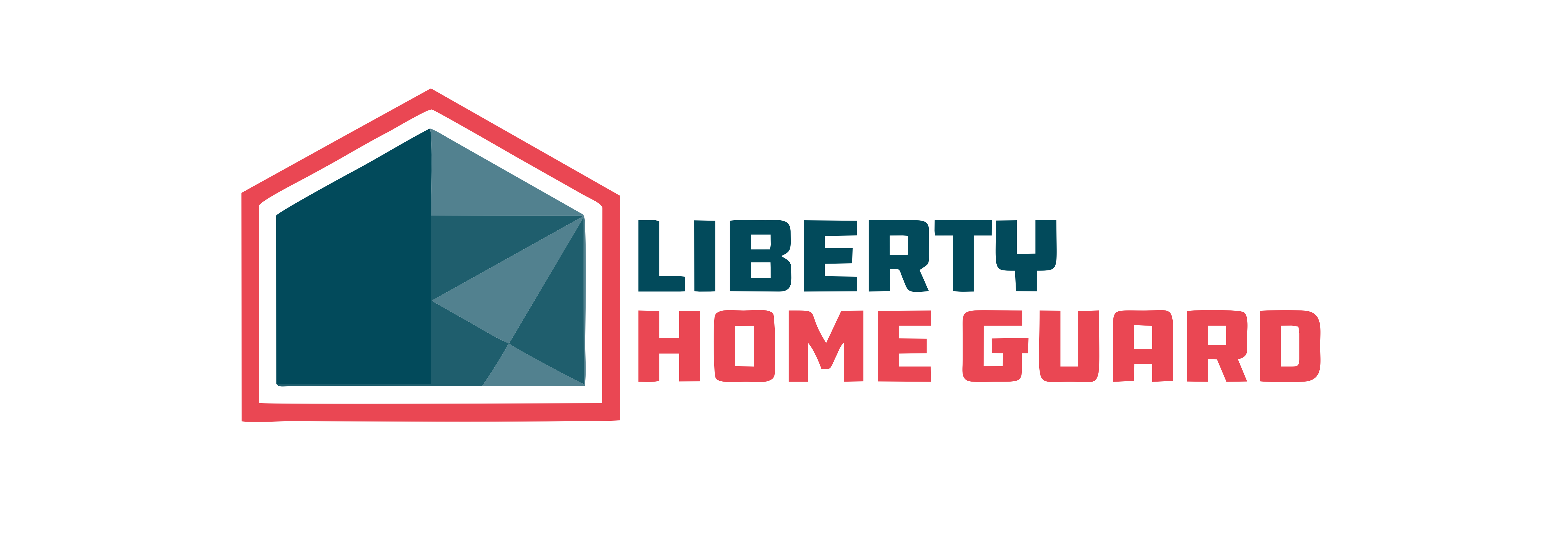 Last updated: April 1st, 2024
Last updated: April 1st, 2024
5 Common Causes & Fixes For Leaking Dishwashers
A leaking dishwasher might seem like a minor inconvenience, but ignoring it can lead to significant issues for homeowners. From water damage to mold growth, the consequences of a leaking dishwasher can be costly and disruptive. Promptly addressing these leaks is essential to prevent further damage and maintain the functionality of your kitchen appliances.
Let’s learn about the possible causes, from clogged drains to dirty filters; there could be multiple reasons. If you’re unsure where to begin, we’ll assist you in addressing the issue of how to repair a leaking dishwasher!
Common Causes of Dishwasher Leaks & How To Fix Them
Here are some of the issues causing leaky dishwashers and how to tackle them:
1.Clogged Drainage
While a small amount of pooled water in the dishwasher filter area is normal, an excess of more than an inch might suggest a blockage. A clogged drainage system can also cause water to overflow and leak from the dishwasher. Food particles, grease, and debris can accumulate in the dishwasher’s drain hose or filter, obstructing the water flow.
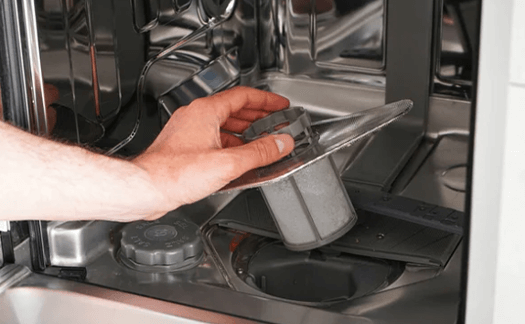
How To Fix A Clogged Dishwasher
Ensuring no blockages and regularly cleaning the system is the simplest routine task to overcome this issue. Otherwise, you can try the following:
- If your dishwasher is connected to a food waste disposal unit, ensure the knockout plug has been removed from the disposal inlet.
- Check for any bits of food blocking the drain or disposal unit.
- Look for any bends or twists in the drain hose.
2.Worn or Damaged Door Latch & Gasket
Leakage due to worn or damaged door latch/gasket is one of the most common and, fortunately, fixable dishwasher problems. This issue happens when the door gasket cracks or tears, allowing water to seep out during the wash cycle. The door gasket could also cause problems when it loses its elasticity and becomes loose or deformed, compromising the seal.
If The door latch malfunctions, it might not properly engage the door, allowing water to leak out. A physical bend or misalignment in the latch can prevent it from properly securing the door.
Internal components within the latch mechanism can wear out or break, hindering its ability to secure the door.
How To Fix Dishwasher Door Gasket Problem
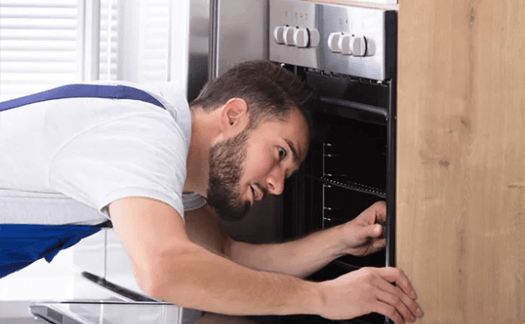
- Check if the gasket around the door is cracked or damaged. If worn out, it’s time for a dishwasher gasket replacement.
- Look for objects like silverware or big pieces of food stuck between the door gasket and the dishwasher tub. These can prevent the door from closing properly and, hence, cause leaking dishwashers!
- If the dishwasher door is not aligning properly with the frame, it may not close tightly enough to prevent leaks. Adjust the position of the dishwasher within the cabinet or adjust the door hinges to improve alignment.
How To Fix Dishwasher Door Latch Problem
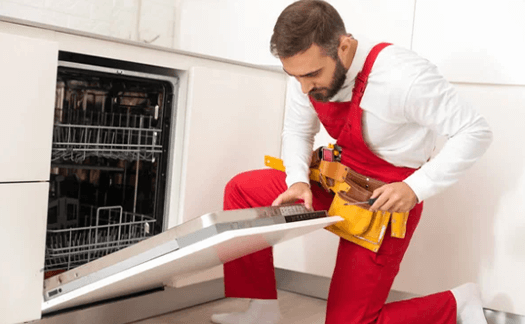
- Check the door latch for any visible signs of damage, such as bends or cracks. Ensure the latch is aligned properly with the door strike to create a tight seal when closed.
- Ensure the door latch is not loose, which could cause leaks around the door. You can tighten it with a screwdriver, but remember to switch off the power first.
- If the door latch is damaged beyond repair, it may need to be replaced. Purchase a new one compatible with your dishwasher and follow the manufacturer’s instructions for installation. You may contact a technician for a quick fix!
3.Loose or Faulty Hose Connection
Over time, the connections between the dishwasher, the water supply line, and the dishwasher drain hose can loosen or cause faults to develop due to wear and tear. Loose connections or damaged hoses can leak water from the dishwasher during operation.
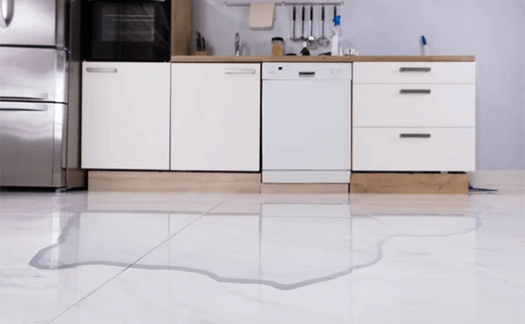
How To Fix Your Dishwasher’s Loose Hose
- Check the connections between the dishwasher, the water supply line, and the drain hose for any signs of looseness, corrosion, or damage.
- Tighten any loose connections using a wrench or pliers.
- If you notice any cracks or splits in the hoses, contact a technician and get them replaced with new ones.
- Ensure all connections are secure to prevent leaks during the dishwasher’s cycle.
4.Cracked or Damaged Tub
A cracked or damaged tub indicates more severe damage to the dishwasher. A crack compromises the tub’s structural integrity, which can worsen over time and lead to larger leaks. Leaking water from a cracked tub can also seep into the surrounding cabinetry and flooring, causing potential water damage and mold growth.
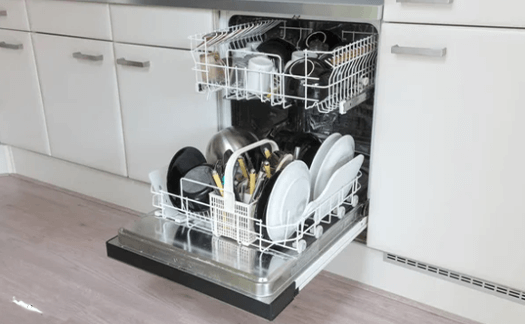
How To Fix Your Dishwasher’s Damaged Tub
- Inspect the interior of the dishwasher’s tub for any visible cracks, chips, or signs of damage.
- If you detect any issues, replace the tub to prevent water from leaking onto the floor during operation.
- This repair may require professional assistance or the replacement of the entire dishwasher unit, depending on the extent of the damage.
5.Placing The Dishwasher On An Uneven Surface
When the dishwasher is tilted, the water may not be distributed evenly throughout the tub during the wash cycle. This can cause water to pool in certain areas, increasing the pressure on the seals and potentially leading to leaks around the door or other components.
An uneven surface can also stress the dishwasher’s internal components, including the door gasket, hoses, and drain pump. Over time, this stress can cause these parts to loosen, crack, or wear out faster, increasing the risk of leaks.
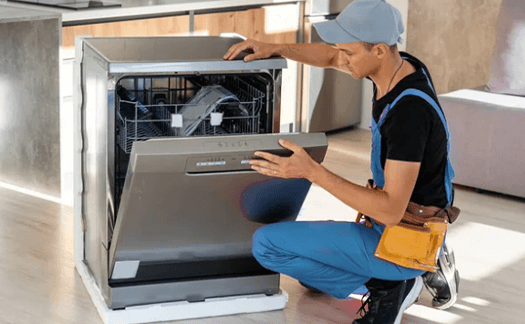
How To Level Your Dishwasher
- To check if your dishwasher is level from side to side, place a level against the top front opening of the tub.
- If it’s not level, adjust the front legs up or down until it sits evenly in the cabinet and flat on the floor, supported by the leveling legs and rear wheels.
- After any adjustments to the dishwasher, always secure the anti-tip brackets back to the counter or side cabinets.
Seeking Professional Help for Permanent Fixes
When persistent dishwasher leaks occur, seeking professional help can provide homeowners with long-term solutions and peace of mind. While DIY fixes may address minor leaks, complex problems often require the expertise of a qualified technician.
A professional technician can accurately diagnose the root cause of the dishwasher leak, whether it’s due to faulty components, structural damage, or installation issues.
Here is some professional assistance that you must consider.
- Manufacturers’ Protection: Most dishwasher manufacturers offer a product warranty to cover any problems that may arise with your appliance. For example, if you have a Whirlpool dishwasher, it comes with a one-year warranty for its components and parts.
- Home Warranty Coverage: If you have a home warranty plan with your dishwasher covered under it, you can contact your provider in case of any inconvenience with the appliance. Home warranty companies cover various dishwasher components, but coverage varies by plan and provider. It’s important to carefully review your home warranty policy to determine the specific coverage for your dishwasher.
Take a look at our curated list of the best home warranty companies to get a better understanding of the top providers and the services they offer
Addressing such common causes of dishwasher leaks can help homeowners prevent water damage and maintain the functionality of their appliances. Regular inspection, maintenance, and timely repairs are essential to avoid leaks and ensure a properly functioning dishwasher. Lastly, make sure you read your user manual to understand any troubleshooting tips or about the specific features of your dishwasher.
Frequently Asked Questions About Leaking Dishwashers
How do I fix my dishwasher leaking from the bottom?
A.
Check the door gasket for any signs of damage or wear to fix a dishwasher leaking from the bottom. Replace the gasket if necessary to create a proper seal. Next, inspect the drain hose and connections for any leaks or blockages.
Tighten any loose connections and clear any obstructions to ensure proper drainage. If the issue persists, check for cracks or damage to the dishwasher tub and replace it if needed. Regular maintenance and timely repairs can help prevent leaks and keep your dishwasher functioning smoothly.
What should I do if there's water in my dishwasher when not in use?
A.
If there’s water in your dishwasher when it’s not in use, it could indicate a problem with the drainage system. Start by checking for clogs or blockages in the drain hose and filter. Clear any debris to allow proper drainage.
Additionally, ensure that the dishwasher’s float switch is functioning correctly. If the issue persists, consider contacting a professional technician to diagnose and resolve the problem. Regular maintenance can help prevent such issues in the future.
How do you unclog a dishwasher drain hose?
A.
To unclog a dishwasher drain hose, start by disconnecting the dishwasher from the power source and removing the bottom panel to access the drain hose. Check for visible clogs or blockages, such as food particles or debris.
Use a pipe cleaner to gently remove the obstruction from the hose. Next, flush the drain hose with hot water to clear any remaining debris. Reconnect the hose and power source, then run a short cycle to ensure proper drainage.
related articles
 Discover First American Home Warranty Locations and What You Need to Know About Their Cover.
Discover First American Home Warranty Locations and What You Need to Know About Their Cover.
 Reviews of Home Warranty Companies Show You How to Determine If Your Home Is Covered
Reviews of Home Warranty Companies Show You How to Determine If Your Home Is Covered







